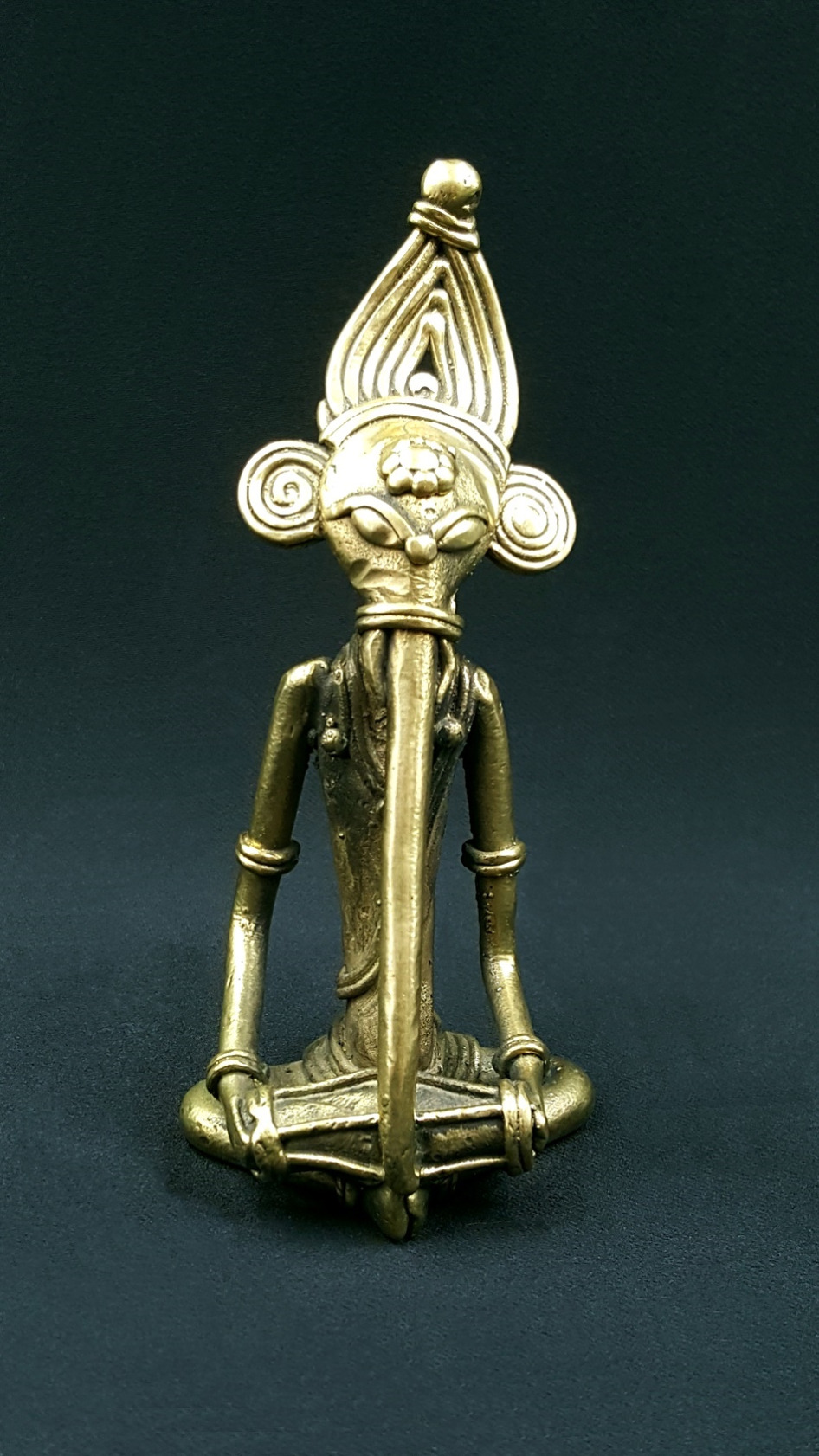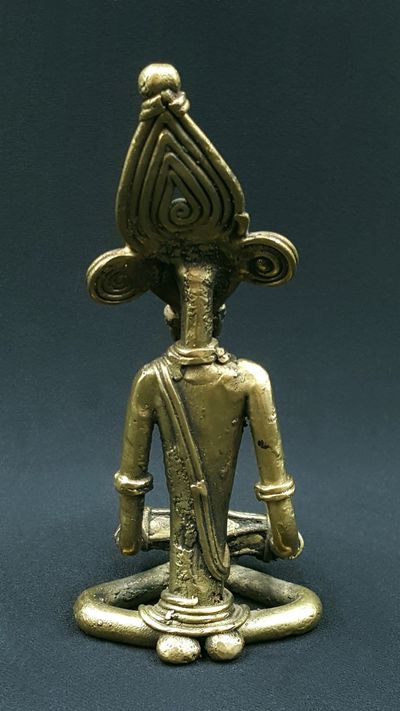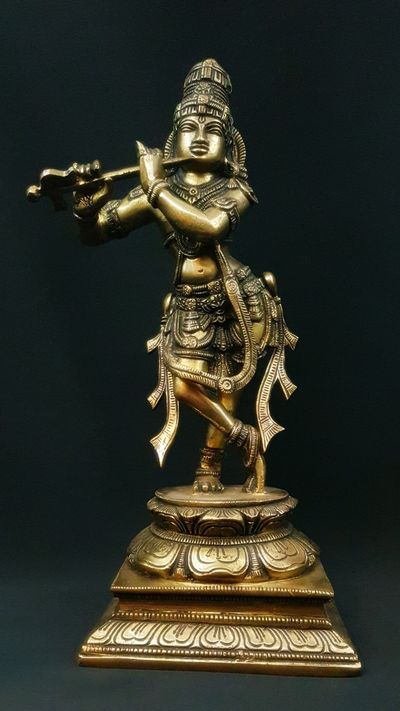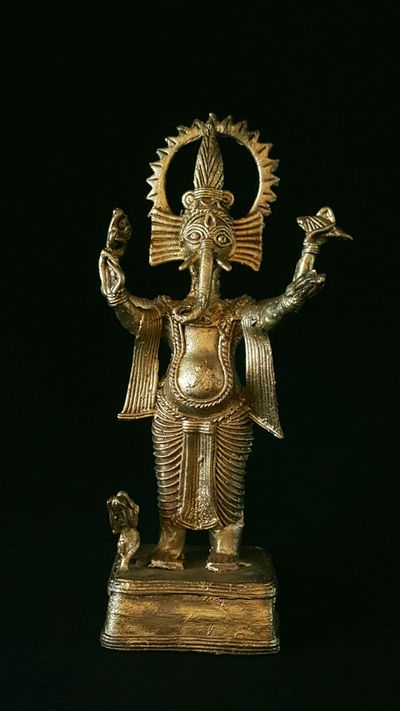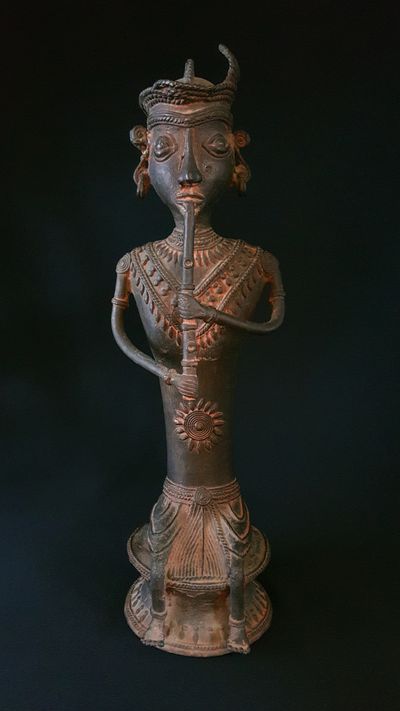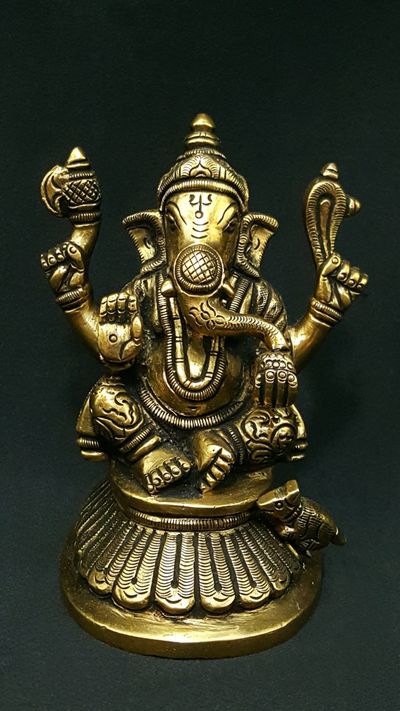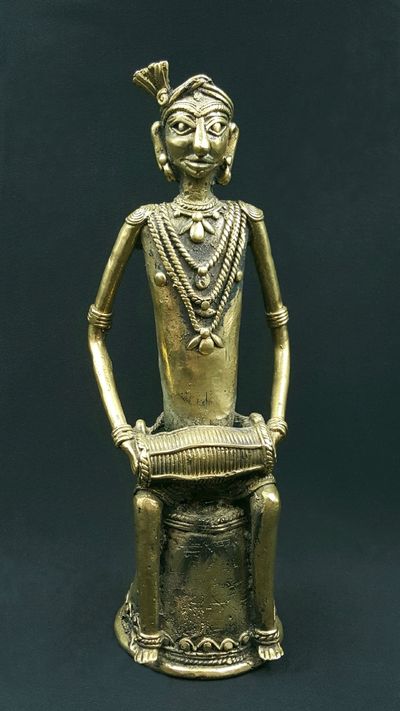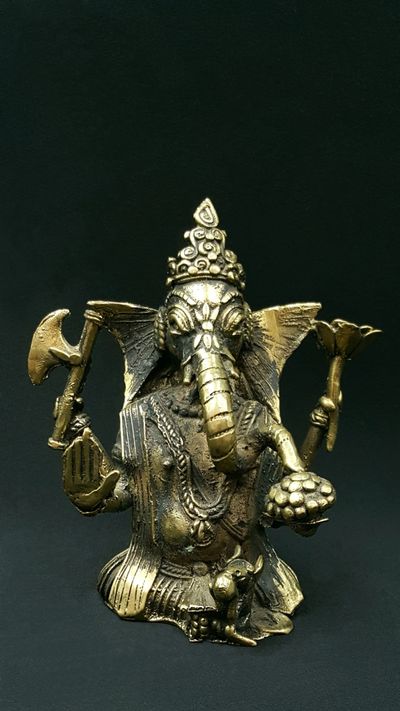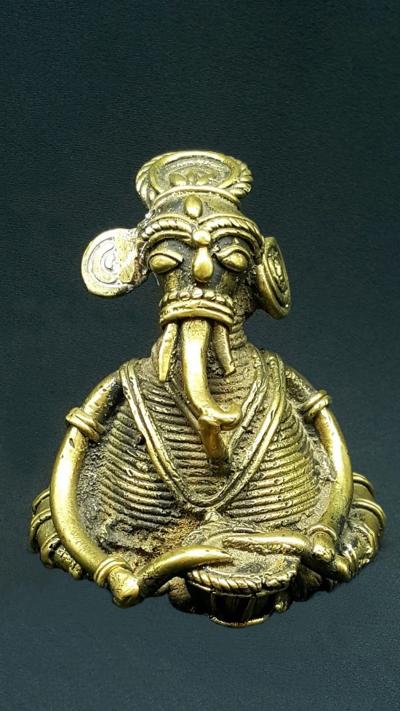Statue Ganesh aérien
Le musicien céleste
€90.00
Dans cette petite statuette Bastar en laiton de l’Inde du Sud, l’artiste a choisi de représenter Ganesh en tant que musicien, qui tel Shiva rythme l’univers. En savoir plus...
Hauteur : 12,1 cm
Poids : 0,220 Kg
Art tribal
Technique de la cire perdue - Alliage cuivreux
Origine : Chattisgarh - Inde
Livraison gratuite UE, Norvège et Suisse
Description
L'art tribal
Les tribus, pratiquant l'art Dokra, sont originaires de la région de Bastar, dans l'Inde du Sud (aujourd'hui situé dans l'État de Chattisgarh), elles ont émigré plusieurs siècles auparavant et se sont installées un peu partout en Inde du Nord au Sud. La plupart ont gardé leur tradition (art culinaire, ,vestimentaire, fêtes...) et leur religion animiste.
L'art Dokra
Cet art traditionnel et artisanal n'a pas changé depuis des millénaires (+ de 4000 ans) et la technique utilisée est toujours celle de la cire perdue : un modèle grossier en argile est réalisé puis recouvert de cire par l'artiste qui va lui donner sa forme définitive avec ses détails. L'ensemble est à nouveau recouvert d'un mélange argileux puis chauffé dans un foyer ouvert où un alliage cuivreux sera coulé. voir Blog
Les objets produits par les artistes Dokra peuvent être de nature usuels : coupelle, bougeoir... des instruments de musiques (cuivres), ou bien artistiques tels que des bijoux, des animaux : chevaux, éléphants, tortues..., des statues d'hommes et femmes représentant des scènes de vies quotidiennes et des divinités hindous adoptées par les tribus : Ganesh, Lakshmi,...
Posture Assis, filiforme, Ganesh joue la musique céleste. L'expression de concentration est renforcée par les sourcils qui se rejoignent et forment un V très marqué.
Cette représentation de Ganesh est très particulière : son ventre qui habituellement est toujours gros, symbolisant l'ancrage, la présence, la stabilité est ici totalement plat ! C'est une des caractéristiques tribales de s'affranchir des codes : ses oreilles bien que larges et rondes ne sont pas omniprésentes, c'est la longueur de la trompe qui enroulant le tambour, donne à Ganesh un aspect aérien étonnant.
Couvre-chef Couronne en forme tiare : Kiritamukuta - symbole de royauté. Le 3° oeil auréole son front : il symbolise la vision, la connaissance.
A noter : dans l'art tribal, Ganesh n'est pas toujours accompagné de sa monture : le rat.
Dans cette statue, du fait de sa petite taille, il n'y a pas de moulage à base d'argile : la statuette est travaillée directement sur une base de cire qui est sculptée très finement par l'artiste.
